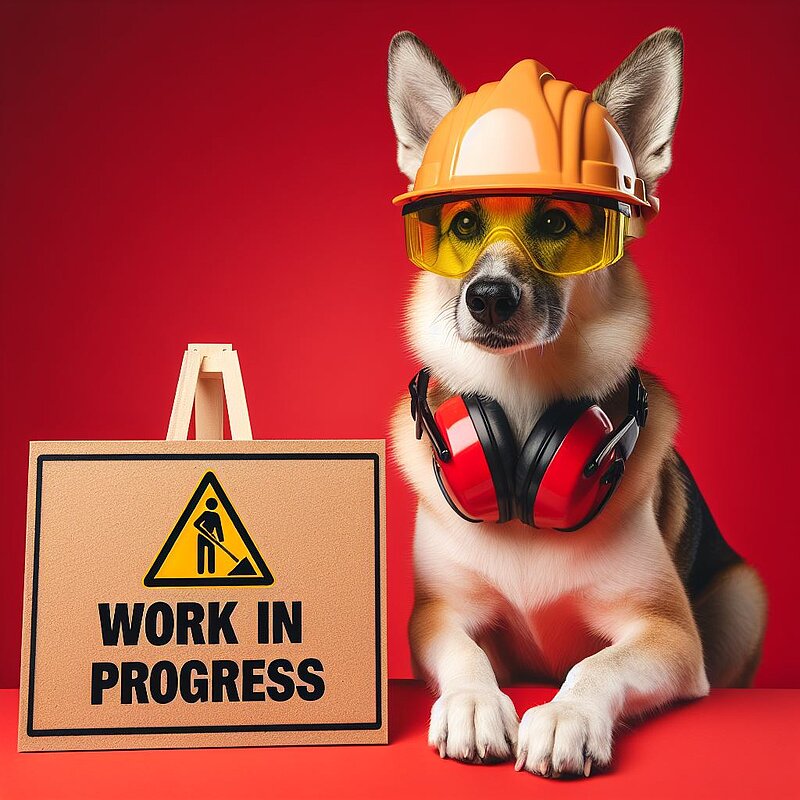
The Greater Swiss Mountain Dog: A gentle giant from the Alps
History of the Greater Swiss Mountain Dog
The roots of the Greater Swiss Mountain Dog reach far back into the history of the Alpine region. Originally, these dogs were bred as farm animals and served as working dogs on farms. Their main tasks included herding and guarding livestock as well as pulling carts. It is believed that they descended from the old Molossian dogs brought to Switzerland by Roman legionnaires.
In the 20th century, the breed was on the verge of extinction, but was saved by dedicated breeders who recognized the value of these robust and versatile dogs. In 1908, the Greater Swiss Mountain Dog was officially recognized as an independent breed and has enjoyed growing popularity ever since.
Who is the Greater Swiss Mountain Dog suitable for?
The Greater Swiss Mountain Dog is ideal for people who have plenty of space and time for their dog. This breed loves to be out in nature and needs plenty of exercise and activity. A house with a large garden or rural surroundings are perfect for these active dogs. Families with children benefit from the Great Swiss Mountain Dog's patient and friendly nature, while individuals and couples can enjoy its loyalty and protective instincts.
Character of the Greater Swiss Mountain Dog
The character of the Greater Swiss Mountain Dog is characterized by friendliness, calmness and loyalty. These dogs are known for their balance and courage, which makes them excellent guard dogs. They are very people-oriented and enjoy the company of their family. Their gentle nature makes them particularly fond of children, and they usually get along well with other pets if they are socialized early.
Appearance of the Greater Swiss Mountain Dog
The Greater Swiss Mountain Dog is a real eye-catcher. With its strong, muscular build and impressive size, it radiates strength and elegance. The characteristic tricolored coat pattern consists of a black base color with rust-brown and white markings. The eyes are dark brown and convey an intelligent, friendly expression. Male dogs reach a shoulder height of 65 to 72 cm and weigh between 50 and 64 kg, while females are somewhat smaller and lighter.
Grooming the Greater Swiss Mountain Dog
Grooming the Greater Swiss Mountain Dog is relatively uncomplicated. The short, dense coat needs to be brushed regularly to remove loose hair and keep the skin healthy. More frequent grooming is necessary during the shedding season in spring and fall. The ears should be checked and cleaned regularly to prevent infection and the nails should be clipped if necessary.
Health of the Greater Swiss Mountain Dog
The Greater Swiss Mountain Dog is generally a robust and healthy breed. Nevertheless, as with many large dog breeds, genetic health problems can occur. These include hip and elbow dysplasia as well as heart problems. Regular visits to the vet and a balanced diet will help to maintain your dog's health and well-being.
Exercise requirements and posture
This breed needs a lot of exercise and is therefore better suited to living in the countryside or in a house with a large garden. Daily long walks, games and other activities are important to keep your Great Swiss Mountain Dog physically and mentally active. A life in a small city apartment is less ideal, unless the dog gets enough exercise and activity.
Training and education
The Greater Swiss Mountain Dog is intelligent and eager to learn, but requires consistent and loving training. Early socialization and positive training are crucial to avoid unwanted behaviour. These dogs respond well to praise and rewards, and with patience and consistency they can be trained to be obedient and well-mannered companions.
Behavior and interactions
The Greater Swiss Mountain Dog is an excellent family dog. He is patient and affectionate with children and usually gets along well with other pets, especially if he has been socialized early on. His protective instinct makes him a reliable guardian who protects his family without being aggressive.
Recognition by the FCI
The Greater Swiss Mountain Dog is recognized by the Fédération Cynologique Internationale (FCI) and is listed in Group 2, Section 3, Molossoids, Swiss Mountain Dogs. This recognition confirms the standard and quality of the breed and enables breeders and owners to take part in international shows and competitions.